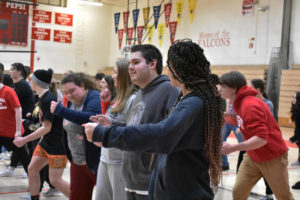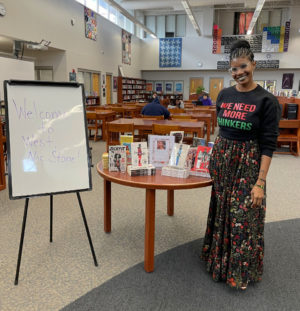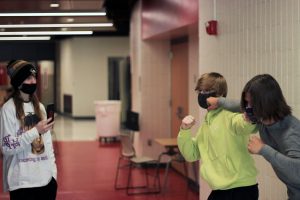Treats and threats
Decorations for Halloween.
October 25, 2017
“Trick-or-Treat?” This is the question that thousands of children all over America look forward to saying with bright-eyed smiles as they are met by a vast variety of strangers with candy and other packaged sweets.
Now imagine that the same bright-eyed child, dressed as a ghoul, dashes home after a long night of candy hunting to enjoy his spoils only to be met with a hospital visit. The child did not look both ways as they raced home, so they did not see the Prius racing down the street. Incidents like this happen more than twice[5.5] the average [2.6] on trick-or-treating night than any other night according to a statistic in 2015 from USA Today.
While some children experience these tragic events on a night of joy and toothaches, other children experience a much less tragic incident when they are out and about.
“One night back around middle schoolish time, I thought I was too old to trick-or-treat. But I decided, ‘No, I’m not,’ and I went trick-or-treating. I was running past Victory Park and I missed the curb and fell back down and my candy went all over the place. Some kids who were passing by picked up all of my candy and ran away and I was just left there crying,” junior Robbie Greve said.
A child never wants to lose their candy, and a parent never wants to lose their child. Some parents and students shared their knowledge of Halloween safety for everyone’s benefit.
“I make sure they [her kids] wear clothes that are visible, not dark clothes, they do not talk to strangers, they do not eat candy as soon as they get it. They have to wait till they get home so it can be inspected. I look for an object or wrappers that look like they’ve been messed with or tampered with,” guidance secretary Mary Gonzalez said.
When it comes to searching candy and checking wrappers, Gonzalez employs similar techniques as other parents.Yearbook adviser Katherine Choate shared her view and expectations for her kids when they go out without her.
“Make sure they are with a big enough group of people that they trust, make consistent contact with an adult or parent, and stay in familiar neighbourhoods,” Choate explained.
Children tend to forget as the years go on, but not everyone forgets what they are told.
“I was always told to look for vehicles, and I remember the cold was always a problem too. So, I would be wearing my Tinkerbell costume with like 40 layers and still be freezing to death because this is Iowa and it is freezing during Halloween. I also saw on the news to look out for razorblades in apples and to not eat candy that is not in a wrapper,” senior Rebecca Casad said.
Safety lessons are taught for reasons which differentiate from person to person. For parents, some hold the belief that some areas are more dangerous than others.
“If we were going somewhere differently like a different neighborhood then we would do things differently, but I feel that my neighborhood is pretty safe, so I think that we would be able to keep doing the same things we [normally] do. I believe that it is different in every town,” Alexa Glandon said.
The lesson to take away: never forget the safety tips parents share. Remember to stay in contact with adults, check for tampering with the candy wrappers, stay with a group, and never forget to look both ways. These tips may just save some lives.








